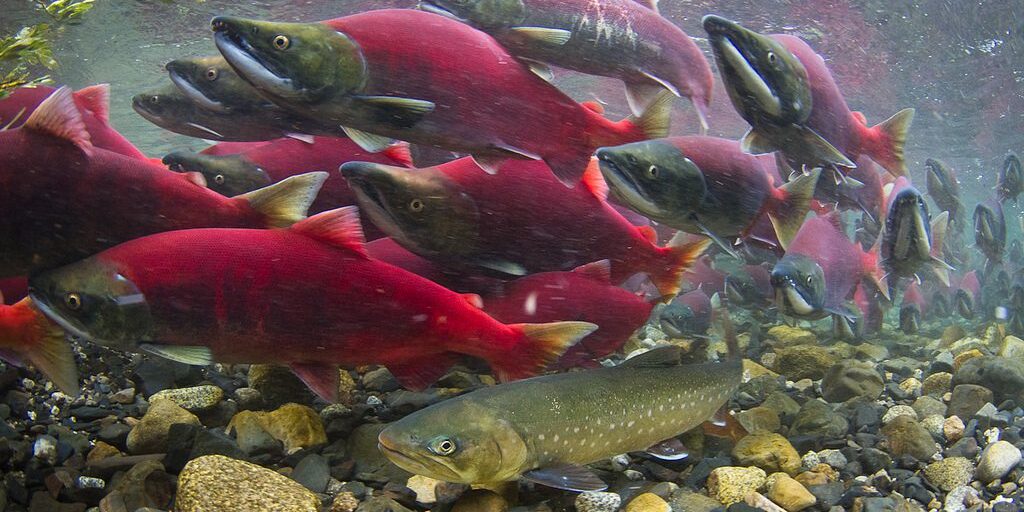Following a record number of sockeye salmon swimming through Pilgrim River this past weekend — over 5,000 in two days — the Alaska Department of Fish and Game in Nome waived all catch limits for the red fish.
As of Thursday morning, an additional 3,700 sockeyes were reported through the Pilgrim River.
Jim Menard, area manager for the Norton Sound and Kotzebue, says he and his staff are encouraging subsistence fishers to get out there and stop the “red horde” before it overtakes Salmon Lake:
“We will reach, definitely exceed our escapement goal range, but as long as we don’t go over about 20,000 into that lake (Salmon Lake), we should be okay. One year, we put 80,000 in the lake; a couple years, we put 50,000 into the lake, and we had a big crash come about. What happens is, when the fry come out, there’s just not enough feed for them, so some of those age classes started to crash.”
About 380 permits have been given out by Fish and Game in Nome so far this season, and Menard expects last year’s record of more than 500 permits will be reached again this year.
For most of these fishers with permits, Menard says there’s only one question on their minds: “the sockeye run is good, the chum run is good; now, what’s going to happen with the silvers?”
Menard says, for now, his estimate is that the run of silver salmon will be above average this year, but warmer ocean temperatures during the past few winters could further increase the number of 4-year-old silver fish coming through Nome’s rivers:
“The difference between silvers and chum and pink are chum and pink immediately go to sea as fry, whereas the silvers are going to over-winter two years in the fresh waters. We’ve had warm winters starting with that 2013 age class, so we know we didn’t have too many issues with eggs freezing, that sort of thing. So, we think the egg survival rate was very good. The fry salmon are coming out, so the silver salmon had a lot to eat.”
It’s possible, Menard says, that the numbers of silver salmon will start to rise significantly in the fourth week of July as they replace more of the chum salmon being caught.
Fish and Game’s expectation is that the run could be even better than their current projection, but only time will tell.







